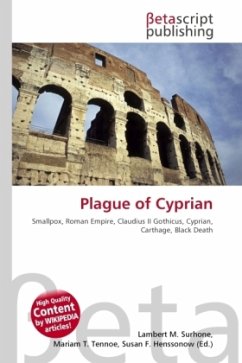
Plague of Justinian
Versandkostenfrei!
Versandfertig in 6-10 Tagen
30,99 €
inkl. MwSt.

PAYBACK Punkte
15 °P sammeln!
High Quality Content by WIKIPEDIA articles! The Plague of Justinian was a pandemic that afflicted the Eastern Roman Empire (Byzantine Empire), including its capital Constantinople, in the years 541 542 AD. The most commonly accepted cause of the pandemic is bubonic plague, which later became infamous for either causing or contributing to the Black Death of the 14th century. Its social and cultural impact is comparable to that of the Black Death. In the views of 6th century Western historians, it was nearly worldwide in scope, striking central and south Asia, North Africa and Arabia, and Europe...
High Quality Content by WIKIPEDIA articles! The Plague of Justinian was a pandemic that afflicted the Eastern Roman Empire (Byzantine Empire), including its capital Constantinople, in the years 541 542 AD. The most commonly accepted cause of the pandemic is bubonic plague, which later became infamous for either causing or contributing to the Black Death of the 14th century. Its social and cultural impact is comparable to that of the Black Death. In the views of 6th century Western historians, it was nearly worldwide in scope, striking central and south Asia, North Africa and Arabia, and Europe as far north as Denmark and as far west as Ireland. The plague would return with each generation throughout the Mediterranean basin until about 750. The plague would also have a major impact on the future course of European history. Modern historians named it after the Eastern Roman Emperor Justinian I, who was in power at the time and himself contracted the disease.












